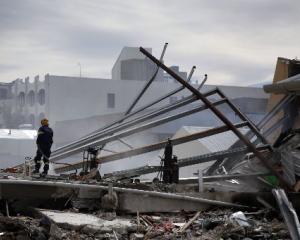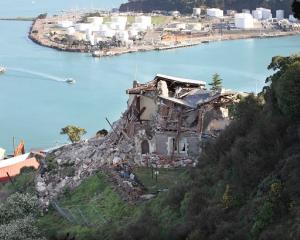It is, perhaps, too soon to be predicting a definitive turning of the tide on Christchurch's post-earthquake fortunes, but not withstanding the apparent intermittent setbacks there are signs of a gently arcing upswing.
As is well known from recent history this could all come to nought with further significant seismic activity, but the indications on this front, too, appear to be of a settling.
If this is so, while the first and overriding response must be relief and joy for the city and citizens of Christchurch, those whose inclination or professional prerogative it is to take the long view will understand there will be repercussions for the entire country, but especially for the rest of the South Island.
These will of course be mostly positive: a great many residents of Christchurch have suffered severe disruption, crippling financial misfortune, professional dislocation and, in some cases, tragic personal loss.
While an improvement in the city's fortunes will not reverse nor heal all of this, it will provide the relief and hope essential to fuel the centre's future.
The rebuild of Christchurch will have ramifications for Dunedin.
On the one hand, anything that improves the economic circumstance of Christchurch will in the long run benefit this city.
Christchurch has long been the gateway for a robust South Island economy and post-earthquakes, the economy has suffered appreciably precisely because of the loss of the city's facilities.
Tourism, import-export, hospitality, housing, the public sector, private enterprise across a range of commercial fields - all these have been reduced to fragments of their former selves.
So what has now changed? Primarily there is a growing realisation that Christchurch will be rebuilt - and that it is on the cusp of one of the major city reconfigurations and reconstructions of modern times.
It is estimated somewhere between $25 billion to $30 billion will be spent on this over the next decade or so.
That is the approximate equivalent of 150 new Forsyth Barr stadiums.
Imagine the labour force, the engineering and design expertise, the new housing, the hospitality, schooling, medical, dental, leisure and general retail requirements to service such an undertaking.
It will be unprecedented and it will be huge.
But are there indications it is actually happening? Take the trend in the migration statistics, for starters.
In March 2010, before the first earthquake in September that year, 500 Christchurch residents moved overseas.
In March 2011, after September, Boxing Day and February 22, that more than doubled as 1100 fled the city.
In March this year, that number has fallen back to 600. The people of Christchurch appear more determined than ever to stay put.
That figure is soon likely to be dwarfed by numbers of people moving to Christchurch as the demand for labour and skills of all kinds grows.
That demand will ask questions of the city's neighbours providing both opportunities and challenges.
Cognisant of this, Dunedin has already, wisely, begun scoping exercises to see how it can best take advantage of the opportunities and manage the challenges.
A construction business consultant tasked with handling the city's response to the rebuild further north has been appointed.
As an example of the sort of exodus that could occur as opportunities arise in Christchurch, Dunedin is to lose one of its senior infrastructure managers - water and waste - to the Christchurch rebuild.
The "boom" inevitably accompanying the rebuild as it acquires momentum will attract plumbers, builders, electricians, draughtsmen, painters and decorators and all the associated crafts and trades, before spreading out into the services sector.
Dunedin contracting businesses and individual tradesmen are likely to benefit, but how long will it be before their skills and expertise are lost to city permanently, with their families?
This is where the requirement to manage the challenges resides.
For all that, it must be hoped that the tender shoots of Christchurch's recovery - a new "cardboard" cathedral, for instance, and the 100-day blueprint for the inner-city plan - are not frosted by any further quakes or associated loss of confidence.
The city and its people are long overdue a break and, ultimately, Dunedin and Otago stand to benefit when that city's fortunes change for the better.






